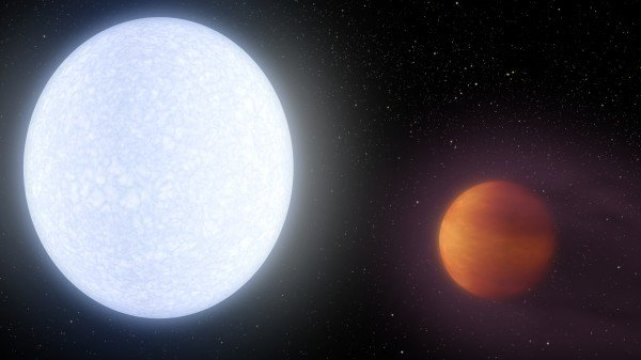A newly discovered Jupiter-like world is so hot that it's stretching the definition of the word "planet." With a day-side temperature of 4,600 Kelvin (more than 7,800 degrees Fahrenheit), planet KELT-9b is hotter than most stars, and only 1,200 Kelvin (about 2,000 degrees Fahrenheit) cooler than our own sun.
In this week's issue of the journal Nature and at a presentation at the American Astronomical Society spring meeting, an international research team led by astronomers at The Ohio State University and Vanderbilt University describes a planet with some very unusual features.
For instance, it's a gas giant 2.8 times more massive than Jupiter but only half as dense, because the extreme radiation from its host star has caused its atmosphere to puff up like a balloon. And because it is tidally locked to its star -- as the Moon is to Earth - the day side of the planet is perpetually bombarded by stellar radiation, and as a result is so hot that molecules such as water, carbon dioxide, and methane can't form there. The properties of the night side are still mysterious - molecules may be able to form there, but probably only temporarily.
